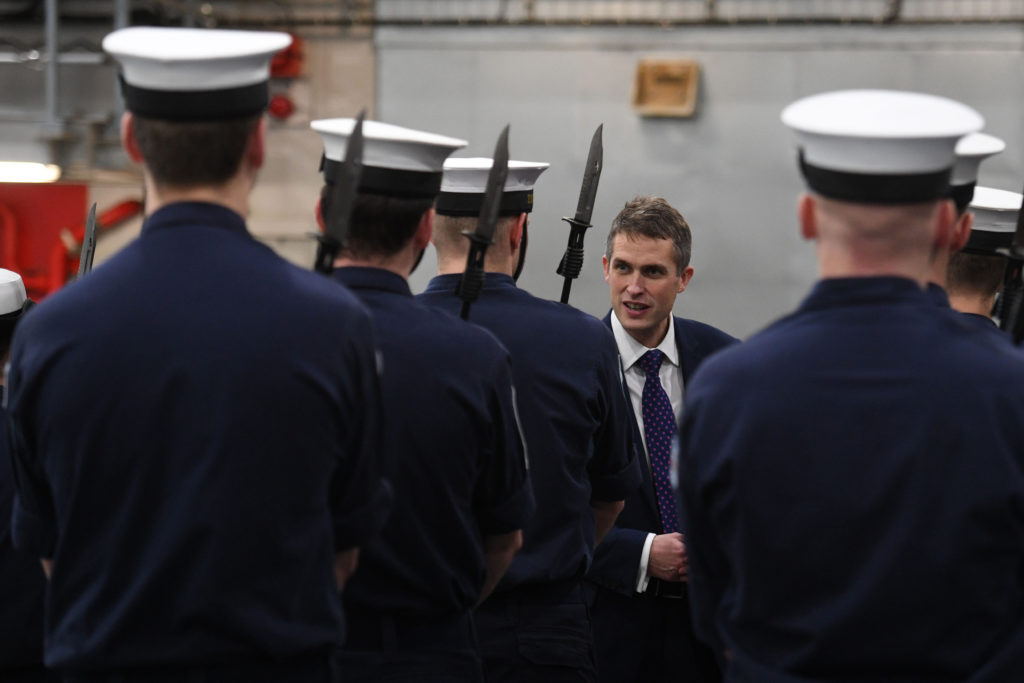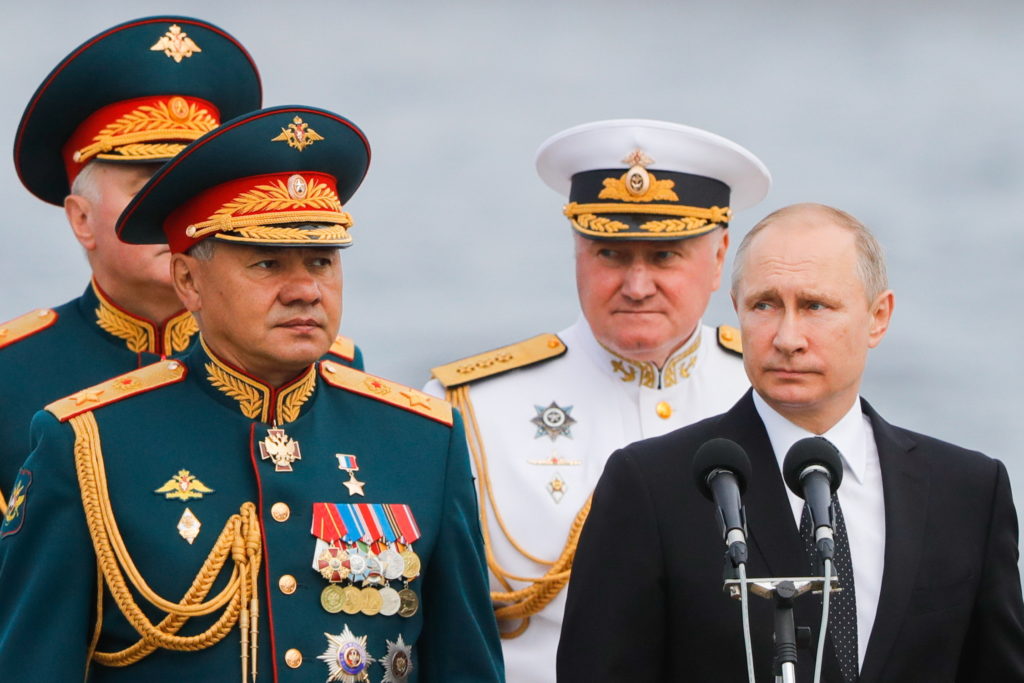Credit: Pixabay/Google Images

Reports of unarmed conflict between the Defence Secretary and the Chancellor in the precincts of the Palace of Westminster may be exaggerated, but the casus belli is indisputable. Just before the summer recess the Government launched a review of national security capabilities, to be led by the National Security Adviser, Mark Sedwill, formerly Her Majesty’s Ambassador to Afghanistan and permanent secretary at the Home Office. His recommendations are expected early in the New Year.
It is, of course, a cost-cutting exercise; no review was ever conducted with the intention of spending more money, although occasionally more money has trickled into Defence later, if only to recover ground lost in previous cuts. It is certainly not billed as a defence review; there was a defence review only two years ago – a strategic defence and security review (SDSR) no less. The present exercise is to see if the capabilities envisaged in SDSR 2015 are consistent with requirements and affordability post-Brexit (and in light of the determination and pace of the North Korean nuclear programme), the UK needing to strengthen security closer in – home defence and the Euro-Atlantic area – while at the same time reinforcing the aspirations of “Global Britain”.
And how to do this with less money than had been hoped for.
It would not be entirely accurate to say that Mark Sedwill’s task is to discover a way of making bricks without straw; but neither would it be entirely inaccurate. At the height of the Cold War in the 1980s, Britain’s defence spending was over 5% of GDP; today it is just short of 2%, and the defence budget no longer adds up. Further cuts look likely, therefore; and yet, as I describe elsewhere https://unherd.com/2017/11/retreating-budgets/, the services in their present shape have been cut so deep in the past twenty years that there is no longer any margin for error. For as General Sir Richard Barrons, until recently Chief of Joint Forces Command, said last month: “Defence is close to breaking. Unless you put more money in it, it will fall over… The armed forces are in a denial that they can hold this together. They can’t hold this together… They are effectively fielding holograms of capability in some cases.”
WYS isn’t necessarily WYG
“Holograms of capability”: this is Mark Sedwill’s challenge. Either the respective ministers – Foreign Office (for GCHQ and SIS), Home Office (for the Security Service), and Defence – must squeeze more money out of the Chancellor, or else we must ditch capabilities, wholly or in part, that we have hitherto thought either essential or highly desirable. This, however, makes the review in effect a review of strategy, and so far there is little evidence of deep strategic thinking. It is certainly not helped by the appointment of one of the least experienced secretaries of state for defence in recent times (Gavin Williamson), and by the decision of the chief of the defence staff (Air Chief Marshal Sir Stuart Peach) to bail out early to become chairman of the Nato Military Committee next summer. The authority of both, within the services and with the Treasury, will not be great.
And authority within the services will be especially necessary if wholesale capabilities are to be ditched. The MoD, in part because of a lack of intellectual horsepower at the very top, and a semi-anarchic chiefs of staff system when it comes to Defence programming, has frequently been too willing to accept some of the services’ foundational assumptions. Coupled with political pressure stemming from the government’s current susceptibility to noisy if not always well-informed MPs about what capabilities are strictly necessary, manoeuvre-space is as limited as it was on the Western Front a century ago.

One of the mantras in Whitehall at the moment is that “numbers” themselves aren’t important, but rather “effect”; or as one senior official puts it, that “numbers are a poor metric”. This sounds good, but it doesn’t really add up. What if the effect you need is “mass” – a large number of troops, say, to control an insurgency, or manage civil chaos in the post-fighting stage of a campaign (witness Basra after the Iraq War)? What if you need redundancy – the ability to take casualties in men or equipment – without which it might be too risky to act at all in fear of losing the nation’s prime assets? And what if numbers is the metric by which both potential enemies, and allies, measure us? Public opinion views capability largely in numerical terms; why should those abroad, even professionals, see it so differently?
It is patently true that technology can improve effects. A hundred infantrymen today can do far more than could a hundred infantrymen at Waterloo; but so can a hundred of the enemy’s infantrymen. It is patently true that greater availability of equipment – e.g., warships spending less time in dry dock – can be taken into account when doing the “metrics”; but not if what you want is simultaneous and wide-ranging presence.
In the end, numbers matter.
As so often, we’ve been here before
This was the problem that British and other NATO forces struggled with during the Cold War – the possibility that sheer numbers in the Group of Soviet Forces Germany would overwhelm the conventional defences of Allied Forces Central Europe. The same fear existed, if to a lesser extent, on the southern flank. The answer was to supplement conventional forces by battlefield nuclear artillery: guns or ballistic missiles which could deliver low-yield warheads primarily for military, rather than deterrent, effect. They did, however, serve to enhance the strategic deterrent (Trident) by providing the first rung in a ladder of nuclear escalation – or “seamlessness” as it was called – with the next rung being air-launched “theatre nuclear weapons” of greater yield.
Belgium, Canada, Germany, Greece, Italy, Netherlands, Turkey, and the UK all had artillery units trained in nuclear fire, and specialist logistic and security units. Their allocated nuclear weapons – missiles or artillery rounds – manufactured in the United States, were in the overall custody of the US Army, which had detachments assigned to the national artillery units.

In 1991, at the end of the Cold War, the US unilaterally withdrew its nuclear artillery shells from service, and Russia followed in 1992[1. The US removed around 1,300 nuclear shells from Europe, dismantling the last warheads by 2004.]. Since then, the US’s sub-strategic nuclear weapons development has focused on rather more precise effects such as penetrating hardened sites – the very capability, indeed, that might be most useful in a disarming strike against North Korea. In such a case, use of the weapon would be strategic rather than tactical, which serves to demonstrate the singular utility of nuclear weapons: the difference between battlefield, theatre and strategic nuclear weapons is not so much yield and delivery method but the target.
The subsequent disintegration of the former Soviet Union, and with it the degradation of Russian forces, seemed to confirm that withdrawal of battlefield nuclear artillery this was the correct decision, but if Putin’s Russia is as dangerous as policymakers in London (and of course Washington) are saying, then we are once again looking at a balance of forces problem in Europe akin to that of the Cold War – and rather more complicated. Soon after gaining power in 1999, Putin began pouring oil money into the Russian armed forces’ modernisation programme, but not only into conventional capability. One of Moscow’s assessments was that NATO’s defensive power during the Cold War, even without battlefield nuclear weapons, had been too great to confront, and that simply building up the armed forces on the old Cold War model would once again make for stalemate. Russia’s forces began also therefore to develop cyber capability and the doctrine of “hybrid warfare” designed to negate and outflank NATO’s conventional superiority.
In addition, sources suggest, as a result of the US’s use of precision munitions in the Kosovo War (with rapid and large-scale destruction of military assets and little collateral damage), Putin formulated a concept of using both tactical and strategic nuclear threats and strikes to de-escalate a conventional conflict, or force an enemy to disengage[2. See, for example, the Carnegie Endowment for International Peace assessment at https://carnegieendowment.org/2016/06/30/russia-and-security-of-europe-pub-63990].
“It is with artillery that war is made” (Napoleon)
Instead of trying to build-up NATO’s conventional forces to meet a re-imagined Cold War-type threat, therefore, something for which there seems little appetite among NATO continental European members, and there is simply not the money for Britain to do so anyway, it may be time to reintroduce battlefield nuclear weapons in order to release resources to counter the new Russian “outflanking” capabilities.
Elsewhere https://unherd.com/2017/11/pope-field-marshall-agree-trident-not-renewed/ I argue that now might be the time to scale down our strategic nuclear deterrent. The proposal to reintroduce battlefield nuclear weapons may therefore seem inconsistent. The idea of “stepping down a strategic nuclear rung” is, however, a question of readiness, not of capability. Possessing capability is the most important aspect of deterrence; the perceived willingness to use that capability is of the same order. The capability’s precise readiness status is not.
Other than raising spending on Defence and Security to 5% of GDP, re-arming with battlefield nuclear artillery would be the most powerful message that Britain could send – both to allies and potential enemies. For one thing, it would show that we had the guts to do what is necessary, no matter how shocking. In short, that however inadequate the leadership of the MoD may appear, we take Defence deadly seriously.










Join the discussion
Join like minded readers that support our journalism by becoming a paid subscriber
To join the discussion in the comments, become a paid subscriber.
Join like minded readers that support our journalism, read unlimited articles and enjoy other subscriber-only benefits.
Subscribe